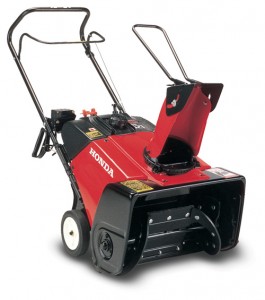 There are lots of great ways to make winter storm cleanup a bit easier, but snowblowers are easily the most effective. In order to keep this key piece of equipment functioning most efficiently, equipment owners will need to make sure that they’re engaging in regular maintenance that keeps fluids, parts, and other snowblower components in a great state of repair. For those who might be new to snowblower functionality and maintenance, there are a few key guidelines to follow and a few great resources that will make snowblower maintenance easy to accomplish from the start of winter through the first warm days of spring.
There are lots of great ways to make winter storm cleanup a bit easier, but snowblowers are easily the most effective. In order to keep this key piece of equipment functioning most efficiently, equipment owners will need to make sure that they’re engaging in regular maintenance that keeps fluids, parts, and other snowblower components in a great state of repair. For those who might be new to snowblower functionality and maintenance, there are a few key guidelines to follow and a few great resources that will make snowblower maintenance easy to accomplish from the start of winter through the first warm days of spring.
Ensure Safety Before Starting Maintenance Procedures
Maintenance is designed to enhance both the safety and efficiency of the typical snowblower, but operators should not ignore safety while they actually get maintenance work done. Make sure that the snowblower’s engine has had time to cool off if the equipment was recently used, and disconnect the spark plug in order to guard against unwanted engine starts. The equipment should be placed on a flat, level surface so that it doesn’t tip over. Equipment operators should be wearing appropriate attire and, if necessary, safety glasses and gloves to guard against injury.
The Maintenance Schedule: An Overview of Required Maintenance
All Honda snowblowers come with a maintenance schedule included in the operator’s manual. This maintenance schedule is essential when learning how to take care of the snowblower throughout the winter, before storage, and at the start of the snow season. The schedule provides the proper timeline for everything from oil changes and checks to part replacements and essential tune-ups. For those just getting acquainted with the Honda HS521, review this document at the start of each season and follow its guidelines for routine maintenance strictly. While doing so, here’s what to know when checking, changing, or cleaning key parts of the equipment.
1. Snowblower Oil Checks and Changes
Honda recommends checking snowblower oil levels before each outing with the equipment. After the first 20 hours of use with a new HS521 snowblower, the oil should be changed. Oil should also be changed on an annual basis before the equipment is used for the first time each winter season.
An oil change should always be conducted while the engine is still warm, but after it has cooled down a bit from recent use. Honda recommends 5W30 oil for its HS521 model, which should be filled to the appropriate fill line only after old oil has been drained to an eco-safe disposal container.
2. Spark Plug Service and Replacement
The spark plug should only be checked when the engine is cool or cold, to avoid burns and other injuries. To ensure proper operation of the snowblower, Honda recommends regularly checking the measurement of the spark plug gap and clearing away any carbon or dirt deposits that might prevent proper functioning of the equipment. A spark plug gap of between 0.7mm and 0.8mm is recommended. If the equipment appears particularly worn or damaged, it should be replaced immediately.
3. Scraper Maintenance
The snowblower’s scraper is a key way for the equipment to get snow away from paved surfaces with ease, but its constant contact with the ground means that it can easily become worn or damaged. Here’s what to know for inspection, adjustment, and replacement of the scraper.
Scraper Inspection
To inspect the scraper, simply place the snowblower on a flat and paved surface. Look at the position of the scraper, and measure the distance between the pavement and the equipment. If the distance exceeds 2mm from the ground, adjustment or replacement will be necessary.
Scraper Adjustment
If the only problem with the scraper is its distance from the ground, adjustment is all that’s necessary. Begin by draining the fuel tank, and then loosen the self-locking nuts that hold the scraper in place. Adjust the equipment as needed and then tighten those self-locking nuts to hold everything in place.
Scraper Replacement
If damage is apparent, follow the same procedure above for adjusting the scraper. This time, simply loosen the nuts, remove them, and remove the scraper itself. Attach a new, OEM scraper in its place and secure it at the proper position for effective snow clearing.
4. Paddle Inspection
Snowblower paddles are another crucial part that can become worn over time due to their contact with both the ground and wintry precipitation. To inspect the paddles, drain the snowblower’s fuel tank and tilt it backward to expose the underside of the equipment. If the paddles need adjustment or show significant damage, replacement will be necessary. Generally, Honda advises equipment owners to seek the help of an authorized service center to repair or replace snowblower paddles.
For Parts and More, Visit HondaLawnParts.com
The online parts lookup tool at HondaLawnParts.com makes it easy to find all of the necessary OEM parts for effortless snowblower maintenance. Whether it’s a new scraper, the oil needed for smooth operation, or something else entirely, the site is bound to have exactly what equipment owners need to get the job done.
